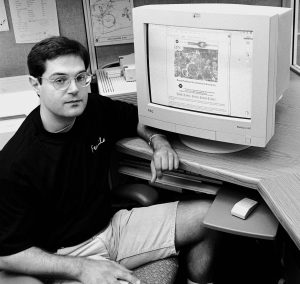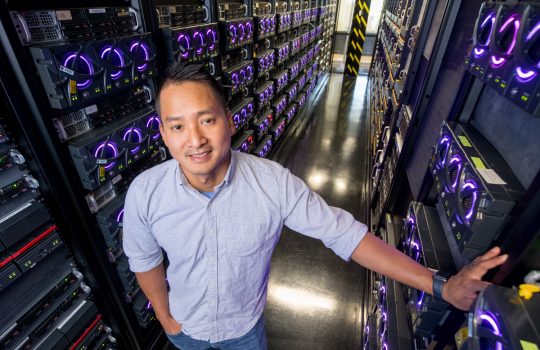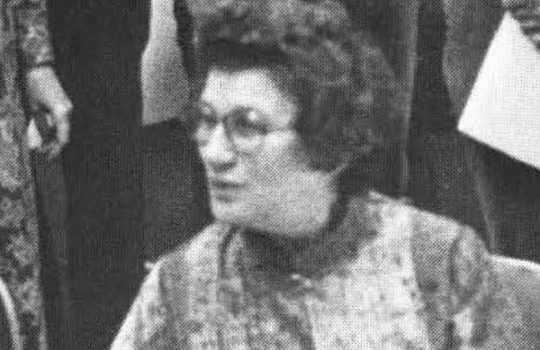Long before videoconferencing, email or even telephones, the physics community was highly connected and in regular communication. Letters mapping out ideas and theories were sent across country borders, and journal articles crossed oceans. The advancement of physics has, in no small part, depended on this. At Fermilab, communication has been no less important.
With the recent inauguration of Zoom, Fermilab’s latest enterprise in advancing communication, and the lab’s 50th anniversary, it’s worth looking back at how far the lab has come.
Particles and postal codes
“In the beginning there was the pony express,” said Dick Carrigan, Fermilab scientist emeritus. “I’m joking. It was actually the E36 experiment.”
E36, the lab’s first experiment to begin operation, was a collaboration between the United States and the Soviet Union to investigate proton-proton scattering. Before Soviet physicists worked at the lab during the experiment’s run, Fermilab physicists had to communicate with them to coordinate plans. To do this, the researchers used a device called a teleprinter, which could send text-based messages.
“Times were adjusted so that it was early in the day here and late in the day in the USSR. That way, it was equally inconvenient to all the parties,” Carrigan said. “Although, to be honest, having a meeting at a regular time was probably more of an innovation.”
By that time, in the early 1970s, telex had been around for decades, and it was starting to be replaced by modems and phone lines. Due to its limited speed, telex often incorporated abbreviated text speak that has now become popular with texting.
“It was slower and much more of a conscious kind of thing,” Carrigan said about using the telex. “Today you pick up your cell phone, and it’s second nature to you in many ways.”
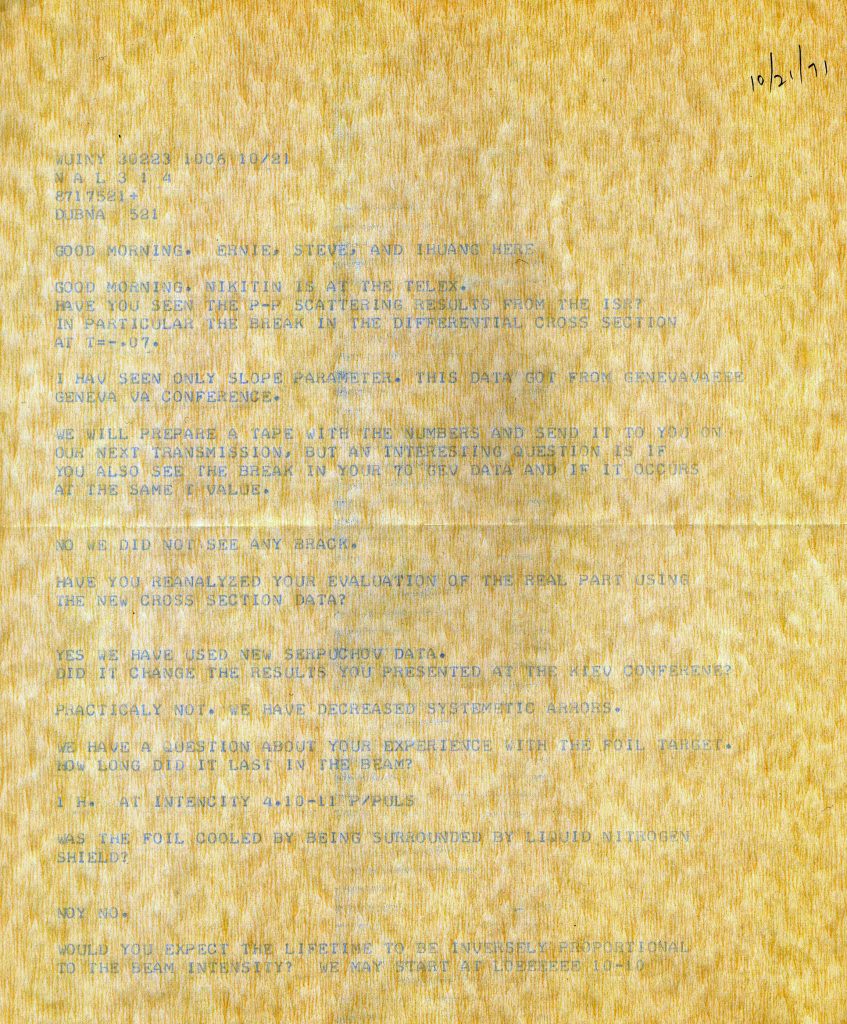
A telex manuscript shows a conversation between scientists at Fermilab and scientists in the Soviet Union working on the E-36 experiment. Image courtesy of Valerie Higgins
Then, as now, the Fermilab community was in contact with collaborators nationally and internationally. Communication outside the lab still relied heavily on postal mail, which was frequently the way physicists shared and edited drafts of articles to be submitted for publication.
“You were often in the situation of wanting to know what time the mail went out, and sometimes you’d be trying to catch mail trucks that were leaving Batavia instead of Fermilab,” Carrigan said, and chuckled at the memory. “I don’t think anybody has any knowledge at all about when the mail leaves this place these days.”
Change @ FNAL
The advent of electronic communications at Fermilab — besides the telephone, which was well established — truly began with fax machines and early personal computers during the 1970s. While most computing resources were used strictly for experimental research, a transition to personal use was fully under way by the end of the decade.
By the mid ‘80s, personal computers were a staple at the lab. Its first adopters for communication purposes were generally administrative assistants who found them more useful for keeping organized and editing communications than typewriters.
Around that time, the precursors to modern email were becoming popular.
Articles in the Village Crier, the laboratory newsletter, frequently gave contact information such as “VAX mail FNAL::HOUSING.” VAX was a popular computer system introduced in the late ‘70s that, among its other features, allowed users to send electronic communiques to other users also connected to the VAX system at Fermilab.
“The choice of email address was a little more freewheeling at that time,” Carrigan said. “My secretary’s email was PAKA@FNAL, which wasn’t connected to her name like emails are now.”
By 1985, Fermilab had a total of about 3,000 computer terminals and printers. These computers were linked together in a system collectively known as Ferminet, which was able to transfer information at the then blazing-fast speed of about 100 kilobits per second. (Modern connections can easily operate a million times more quickly.)
Traditional means of communication were changing as well.
In 1984, AT&T was broken up into regional telecommunications providers. An article from the Village Crier during that time documents the state of Fermilab’s telephone system:
The heart of Fermilab’s telephone system which has served us well over the years is called a Centrex 101. It’s located in an equipment room in Wilson Hall between the ground and first floors off the southwest stairwell. All of our incoming and outgoing calls go through the Centrex switching device.
Telecommunications costs piled up rapidly, with the phone bill increasing as much as 40 percent from one year to the next, up to a price tag of $1 million — a hefty amount back then. Much of this cost came from long-distance calls, which Fermilab physicists used to stay in contact with collaborators at institutions across the country and even overseas.
One result of increasingly expensive phone lines was that it drove new technology. Electronic communication also began to connect Fermilab to other labs and universities in unprecedented ways.
Untangling nets and the Web
The history of networking from early ‘70s to early ‘90s is laden with various iterations of “nets” or networks between groups of computers. These nets acted as limited precursors to the modern internet, connecting select groups of computers — usually at national labs or universities — across the country.
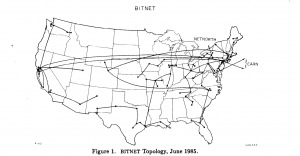
BITNET connections in 1985 link institutions of higher education and national labs. Image taken from Paul F. Kunz, “Status of Networking for High Energy Physics in the United States,” June 1985
Particle physics was at the forefront of this network movement for two important reasons: large collaborations and high data volume. Groups of hundreds of physicists who were spread out, but working on the same experiment, necessitated rapid national (and international) communication. At the same time, high-energy physics experiments were producing more data than ever. Networks provided a novel way to communicate and transfer information.
As a result, the field of particle physics — and Fermilab — had some of the earliest, fastest network connections in the world.
In 1985, Fermilab had two primary off-site network connections: BITNET and Physnet. Physnet was a U.S.-specific network that connected institutions conducting physics research, such as national labs Argonne, Berkeley and Brookhaven. Monthly data use for all of Fermilab was between 500 and 1,000 megabytes, which these days would be good enough only to browse the internet for a few hours.
Fermilab was also connected to BITNET, short for “Because It’s There Network,” a larger network of computers facilitated by IBM and universities. In particular, BITNET was vital to Fermilab communications with CERN and other European laboratories.
With those networks, physicists were able to email one another, share electronic journal articles through services such as QSPIRES and simply keep in touch.
A 1985 report on the status of communication in high-energy physics notes that networks “are also rapidly reducing the number of telephone calls and displacing telex and postal mail as the means of communication within the [high-energy physics] community.”
The major networking breakthrough for the physics community — and soon the rest of the world — came when a computer engineer at CERN by the name of Tim Berners-Lee had a rather bright idea that came to be known as the World Wide Web. The abstract to the original paper documenting the Web begins, “The World-Wide Web (W3) initiative encourages physicists to share information using wide-area networks.”
Fermilab was quick to jump onto the phenomenon and hosted one of the earliest websites in the United States. This year marks the 25th anniversary of the installation of Fermilab’s first web server.
Needless to say, the Web quickly became popular beyond just physicists.
As software, the Web relied on hardware and connections from previous iterations of networks. This included a previous connection established under BITNET between Fermilab and Brazilian universities. Between 1991 and 1994, Brazil relied solely on a couple of wires that went through the Gulf of Mexico and up to Fermilab for all of its internet traffic.
Zooming to the future
The ’90s sent communication for physicists in two diverging movements: They could either rely on tools developed for them or develop their own.
Collaboration technologies implemented for physicists centered on the conference room, according to Sheila Cisko, group leader of audio and videoconferencing at Fermilab. Integrated Services Digital Network became popular in the early ‘90s for its ability to go beyond a simple phone connection in areas such as data transfer.
“But ISDN lines were hard to deploy at a desktop level, partly because of the cost, so they became conference-room-based,” Cisko said.
Back then, there wasn’t the market for network-based communication tools that there is now, so physicists resorted to developing their own audio/video systems.
Mbone tools, short for “multicast backbone,” were used to create audio/video systems that allowed users to communicate from their own desktops.
“Communication could start from there with camera and a microphone,” Cisko said.
As time went on, these audio/video systems become more sophisticated and intuitive to use. Because they were free, unlike ISDN lines, they became quite popular.
A 1994 article in the Village Crier advertises these tools:
Imagine you want to attend an important conference in some far away location, perhaps Europe or the far East, but you’re swamped with work and can’t find the time to make travel arrangements. What do you do? Wait for the proceedings of the conference to be published and then read up on what took place? No need for that. With the help of the Computing Division’s Data Communications and Networking Group you may one day see the conference as it happens and have the information literally at your fingertips.

Mark Kaletka views a video conference from a workstation in the Feynman Computing Center. Photo: Fermilab
These days, there is a veritable plethora of options to choose from to communicate with someone across the world, instantaneously.
“The technology isn’t unique to scientists,” said Wes Ketchum, a scientist on Fermilab’s MicroBooNE experiment. “We’re just piggybacking off of the technology.”
One of the key components that separates new technology from older technologies is the ability to have novel, real-time interactions. Zoom, for example, Fermilab’s web conferencing tool, has a whiteboard feature that allows users to jot down notes or even solve equations that can be seen by other users. And reliable video communication is crucial for international collaboration.
“Body language and visuals are very important to some groups,” Cisko said. “Especially if English isn’t your first language, it’s hard to keep up with somebody if you can’t see them.”
It’s a solution to the longstanding problem of desktop vs. conference room.
“You can have a conference call with 200 people in one meeting,” Cisko said. “People can even connect from their mobile apps.”
Particle physics pioneered international electronic communication, and it’s now been joined by just about everyone and their grandmother. The proliferation and ease of use of electronic communication technology has had consequences for how particle physics today operates.
What is the technology used for? Everything, according to Ketchum. Whether you just want to have a conversation or work on analysis or give a presentation and hear feedback, modern electronic communication tools such as Skype, Zoom, slack and email facilitate it all. Electronic logbooks allow for the crowdsourcing of experiment information.
This kind of easy-to-use, collaborative space is a “key component of scientific communication,” according to Ketchum.
“Ten years ago, when I was a grad student, if something went wrong, you had a big problem,” Ketchum said. “You might have to call someone’s pager in the middle of the night and wait for them to get up and get back to you.”
Now, there are far fewer barriers to communication. Graduate students with questions can simply post to the collaboration’s group chat and get answers in seconds.
In some ways, modern communication might almost be too good.
“There are benefits to having a million ways to communicate,” Ketchum said. “But the problem is that people will communicate in one million ways. It’s hard to keep up.”

